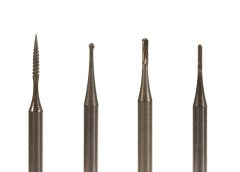Carbide rotary burrs are essential tools used across different industries, from metalworking and woodworking to automotive and aerospace. Understanding different shapes of carbide rotary burrs can help you choose effective tools for specific applications. Explore three common rotary burr shapes—cylinder, cone, and ball-nosed—and their capabilities.
Shape 1: Cylindrical
A cylinder burr has a cylindrical shape with a flat tip. It is used primarily for deburring, shaping, and grinding flat surfaces. Its unique design ensures a smooth finish free of chatter marks.
Some specific applications of the cylindrical carbide burr include removing weld seams, cleaning castings, and straightening edges. Metalworkers often utilize this shape for its durability and efficiency in working with metals like steel and aluminum.
Shape 2: Conical
The conical carbide rotary burr has a cone-shaped design with a narrow tip that widens toward the base. This unique design allows for more significant material removal and enables users to reach tight areas.
Some of the applications of the conical carbide burr include deburring, carving, and shaping. This shape is particularly useful in situations that require a taper or angle to be ground into the workpiece, like in automotive components and die-casting.
Shape 3: Ball-Nosed
The ball-nosed carbide rotary burr has a spherical shape and is designed for creating concave cuts, rounding edges, and shaping fillets. Some uses of the ball-nosed burr include carving intricate designs on jewelry, creating rounded edges on items like guitar bodies, and refining channels on molds in the manufacturing process.
How the burr’s shape affects the work it can do is one of the key things you need to know about carbide rotary burrs. It’s also essential to recognize compatible workpiece materials for your tool. Professional carbide rotary tools can cut wood, ferrous and non-ferrous metals, stone, and plastic.
Understanding the applications of different rotary burr shapes helps metalworkers complete work efficiently to achieve optimal results. Cylinder, cone, and ball-nosed burr shapes have unique applications, and knowing the differences will help you select the right tool for the task at hand. Understand these differences to maximize the effectiveness of carbide rotary burrs in your projects and ensure a high-quality finish every time.





